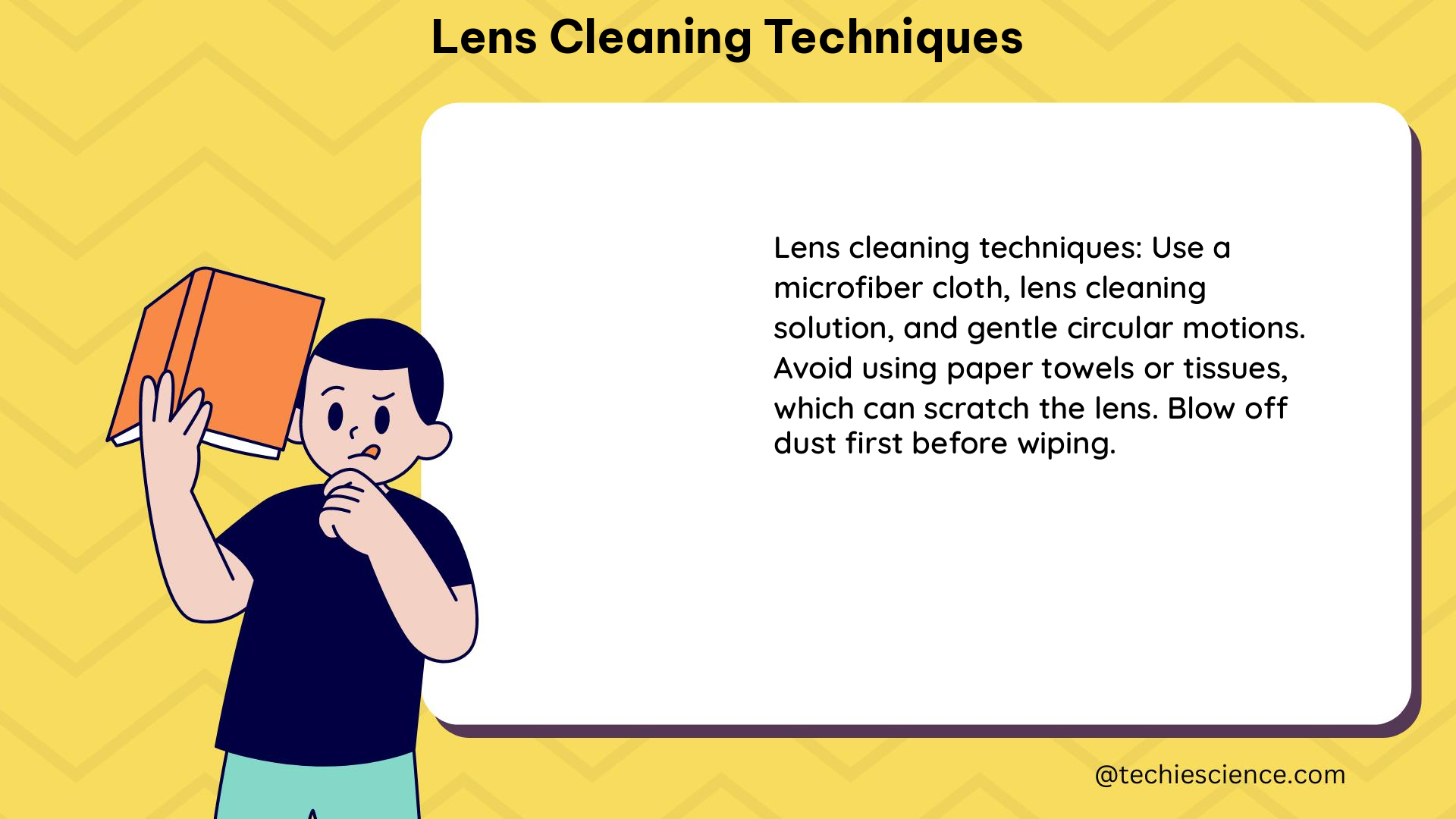Lens cleaning is a critical aspect of maintaining the performance and longevity of optical instruments, particularly in the field of physics. This comprehensive guide delves into the various techniques, materials, and data points associated with effective lens cleaning, providing physics students with a detailed and practical understanding of this essential skill.
Solvent Composition and Cleaning Efficiency
The choice of solvent is a crucial factor in determining the effectiveness of lens cleaning. Naphtha, a common solvent used for this purpose, is a mixture of hydrocarbons with a boiling point range of 30-200°C. The specific composition of naphtha can vary depending on the source and manufacturing process, which can impact its cleaning efficiency.
To quantify the cleaning efficiency of different solvents, we can measure the contact angle between the liquid and the lens surface. The contact angle is a measure of the wettability of the surface, with a lower angle indicating better wettability and, consequently, improved cleaning performance. For example, isopropyl alcohol has a lower contact angle on glass than water, making it a more effective cleaning agent for optical surfaces.
Particle Removal Effectiveness

The effectiveness of a lens cleaning technique can be evaluated by the number and size of particles removed from the surface. A study conducted on endoscope lenses found that a hybrid solution consisting of a hydrophilic coating and a lens irrigation system was highly effective in removing blood and ground substance from the lens surface.
To quantify the particle removal effectiveness, researchers can use techniques such as light scattering or atomic force microscopy to measure the size and distribution of particles before and after cleaning. This data can be used to optimize the cleaning process and ensure the removal of even the smallest contaminants.
Cleaning Frequency and Compliance
The frequency of lens cleaning can also impact the effectiveness of the technique. A study on contact lens care found that compliance with hygienic rules, including regular lens case cleaning, was associated with a lower rate of noncompliance with lens cleaning techniques.
To maintain optimal lens performance, it is recommended to follow a regular cleaning schedule based on the specific application and usage patterns. This can be quantified by tracking the cleaning frequency and correlating it with measures of lens clarity and performance.
Cleaning Time and Solvent Drying Time
The time required to clean a lens can vary depending on the method and materials used. For example, using a solvent with a slower drying time may be more effective for spiral or snaking wipe paths, but may also increase the overall cleaning time.
To optimize the cleaning process, researchers can measure the cleaning time and solvent drying time for different techniques and solvents. This data can be used to develop efficient cleaning protocols that balance cleaning effectiveness and time-to-completion.
Laser-Induced Damage Threshold (LIDT)
The Laser-Induced Damage Threshold (LIDT) is a measure of an optic’s resistance to damage from laser radiation. Cleaning agents and techniques can impact the LIDT of an optic, and it is important to consider this when choosing cleaning materials and methods.
To quantify the LIDT, researchers can use specialized test setups that expose the lens to high-intensity laser radiation and measure the threshold at which damage occurs. This data can be used to ensure that the cleaning process does not compromise the LIDT of the optic.
Practical Considerations and Best Practices
In addition to the quantifiable data points discussed above, there are several practical considerations and best practices to keep in mind when cleaning lenses:
-
Lens Handling: Proper handling techniques, such as using clean, lint-free gloves or tissues, can minimize the introduction of contaminants during the cleaning process.
-
Cleaning Environments: Performing lens cleaning in a clean, dust-free environment can improve the effectiveness of the process and prevent the reintroduction of particles.
-
Cleaning Agents: In addition to solvents, specialized lens cleaning solutions and microfiber cloths can be used to effectively remove contaminants without damaging the lens surface.
-
Cleaning Techniques: Proper cleaning techniques, such as using a spiral or snaking wipe pattern, can help ensure complete coverage and effective particle removal.
-
Drying and Storage: Proper drying and storage of cleaned lenses can help maintain their cleanliness and prevent the accumulation of new contaminants.
By understanding and applying these practical considerations, physics students can develop a comprehensive approach to lens cleaning that maximizes the performance and longevity of their optical instruments.
Conclusion
Lens cleaning is a critical aspect of maintaining the performance and longevity of optical instruments in the field of physics. This comprehensive guide has provided a detailed overview of the various techniques, materials, and data points associated with effective lens cleaning, equipping physics students with the knowledge and tools necessary to master this essential skill.
References
- Konrad_beck1. “What is ‘naphta’, ‘lighter fluid’ used for lens/camera cleaning?” Photo.net, 14 Aug. 2007, https://www.photo.net/forums/topic/276293-what-is-naphta-lighter-fluid-used-for-lenscamera-cleaning/.
- Al-Qahtani, H. A., et al. “Compliance with contact lens care and factors driving noncompliance among contact lens wearers in Saudi Arabia.” BMC Ophthalmology, vol. 22, no. 1, 2022, p. 937.
- Kreeft, D., et al. “Review of Techniques to Achieve Optical Surface Cleanliness and… – NCBI.” National Center for Biotechnology Information, 16 May 2017, https://www.ncbi.nlm.nih.gov/pmc/articles/PMC5603965/.
- Thorlabs. “Optics Handling and Care Tutorial – Thorlabs, Inc.” Thorlabs, Inc., https://www.thorlabs.com/newgrouppage9.cfm?objectgroup_id=9025.
- Reddit. “Broadcast lens cleaning method : r/VIDEOENGINEERING – Reddit.” Reddit, https://www.reddit.com/r/VIDEOENGINEERING/comments/y09vn2/broadcast_lens_cleaning_method/.

The lambdageeks.com Core SME Team is a group of experienced subject matter experts from diverse scientific and technical fields including Physics, Chemistry, Technology,Electronics & Electrical Engineering, Automotive, Mechanical Engineering. Our team collaborates to create high-quality, well-researched articles on a wide range of science and technology topics for the lambdageeks.com website.
All Our Senior SME are having more than 7 Years of experience in the respective fields . They are either Working Industry Professionals or assocaited With different Universities. Refer Our Authors Page to get to know About our Core SMEs.